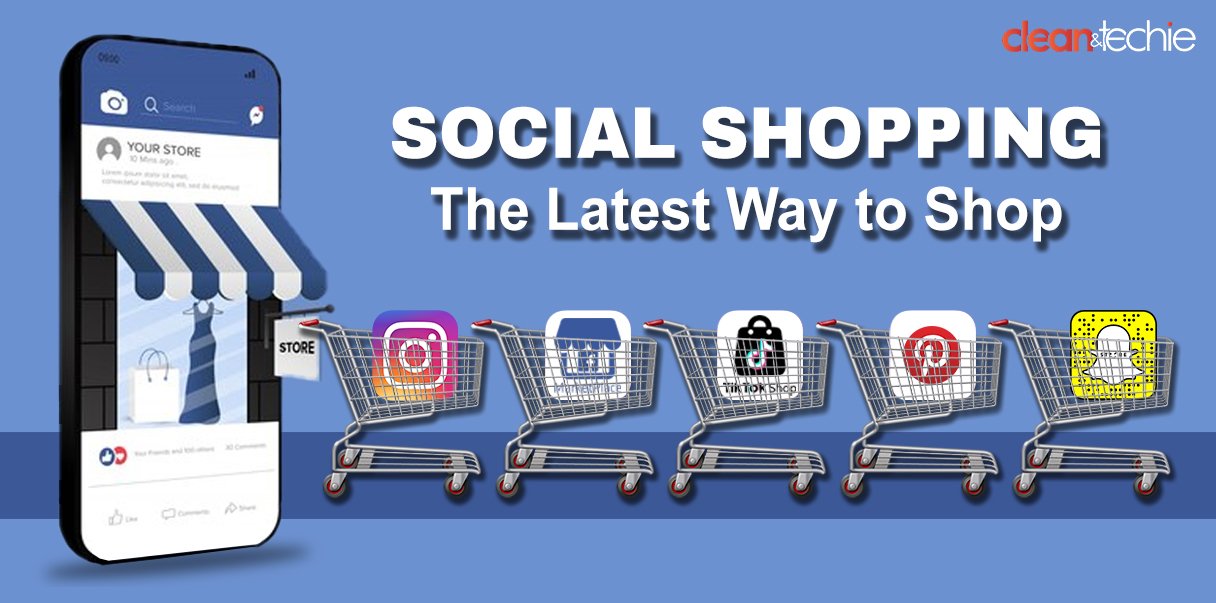Social shopping, a phenomenon that’s rapidly gaining momentum, is transforming the way we discover, shop, and purchase products. It is also known as social commerce. It’s a seamless blend of social media and e-commerce, where consumers can interact with friends, influencers, and brands directly within their favorite social platforms. This trend has revolutionized the shopping experience, making it more personalized, engaging, and convenient than ever before.
What is Social Shopping
To start with basics, social shopping involves using social media platforms like Instagram, Facebook, and Pinterest to browse, discover new brands, and make purchases. These platforms have become powerful marketplaces, offering a vast array of products and services.
Key Features of Social Shopping
Shoppable Posts:
Brands can create posts featuring products that consumers can directly click on to purchase.
Influencer Partnerships:
Brands collaborate with influencers to showcase their products to their followers.
Live Shopping:
Brands host live streams where they showcase products and interact with viewers in real-time.
Personalized Recommendations:
Social media algorithms can suggest products based on users’ interests and preferences.
Benefits of Social Shopping
Convenience:
Social shopping streamlines the shopping process. By integrating e-commerce directly into social media platforms, it eliminates the need for time-consuming store visits or navigating complex online shopping interfaces. This convenience attracts busy consumers who value efficiency and accessibility.
Personalization:
Social media platforms unleashes user data to curate highly personalized product recommendations. By analyzing browsing history, likes, and purchases, algorithms suggest items tailored to individual preferences, increasing the likelihood of conversions and enhancing the overall shopping experience.
Social Proof:
Social proof in social shopping refers to the influence of others’ opinions and actions on consumer behavior. Positive reviews, ratings, and recommendations from friends and influencers can build trust and credibility, encouraging others to purchase products.
Engagement:
Social shopping is all about an interactive and engaging experience compared to the traditional shopping experience. By enabling consumers to interact with brands and influencers, discover new products, and share their experiences, social shopping fosters a deeper connection between brands and their customers, ultimately driving brand loyalty.
Discovery:
Social media platforms act as powerful discovery engines, introducing consumers to new brands and products they might not have encountered through traditional channels. By following influencers, joining relevant communities, and exploring trending topics, users can discover hidden gems and expand their shopping horizons.
Examples of Social Shopping Platforms
Instagram:
Instagram’s meteoric rise as a social shopping platform has been fueled by its user-friendly interface, visually appealing content, and innovative features.
With over a billion active users worldwide, Instagram offers a vast audience for brands to showcase their products. Shoppable tags, introduced in 2017, allow businesses to directly link products in their posts to their online stores, making it easy for users to purchase items without leaving the app. Reels, Instagram’s short-form video feature, has also played a significant role in driving social commerce. Brands can use Reels to create engaging product demonstrations, tutorials, and behind-the-scenes content, capturing the attention of a younger demographic and encouraging impulse purchases.
Facebook Marketplace:
Facebook Marketplace has become a thriving online marketplace, enabling users to buy and sell items locally or nationally. With millions of active users, the platform offers a vast selection of goods, from electronics and furniture to clothing and collectibles. Users can easily browse listings, filter by category or location, and communicate directly with sellers. Facebook Marketplace has also introduced features like shipping labels and payment options, making it more convenient for both buyers and sellers. According to a recent report, Facebook Marketplace has seen significant growth in both user base and transaction volume, solidifying its position as a major player in the online marketplace landscape.
TikTok Shop:
TikTok Shop has become a very popular e-commerce platform within TikTok. Creators can sell products directly to their followers, generating millions of dollars in revenue. The platform’s rapid growth has solidified its position as a major player in the e-commerce industry.
Pinterest:
Pinterest is a visual search engine where users can discover and save images and videos. With shoppable pins, users can directly purchase products featured in these images, making it a seamless shopping experience. This feature has contributed to Pinterest’s growing popularity as a social commerce platform.
Snapchat Shopping:
Snapchat’s augmented reality (AR) features revolutionize virtual try-ons. Users can overlay digital products like glasses, makeup, or clothing onto their faces or bodies, providing a realistic preview before buying. This innovative technology enhances the shopping experience and reduces the risk of purchasing items that don’t fit or look as expected.
Future Trends
Social shopping is a rapidly evolving field, and we can expect to see even more innovative features and platforms in the future. Some potential trends include:
Augmented Reality (AR) Shopping:
AR technology will allow consumers to try on products virtually before purchasing.
Voice-Enabled Shopping:
Voice assistants like Siri and Alexa will integrate with social shopping platforms for a hands-free experience.
Social Commerce Ecosystems:
Entire ecosystems of social commerce platforms and tools will emerge, providing a more comprehensive social shopping experience.
Conclusion
Social shopping has revolutionized the way we shop, offering a more personalized, engaging, and convenient experience. As social media platforms continue to evolve, we can expect to see even more innovative features and opportunities for brands and consumers alike.
Popular mobile phone companies like Apple, Google, OnePlus, Mi and many more have developed marketing strategies to use social shopping platforms to promote their products successfully.
By understanding the key benefits, challenges, and trends of social shopping, businesses can leverage this powerful tool to reach new customers and drive sales.




